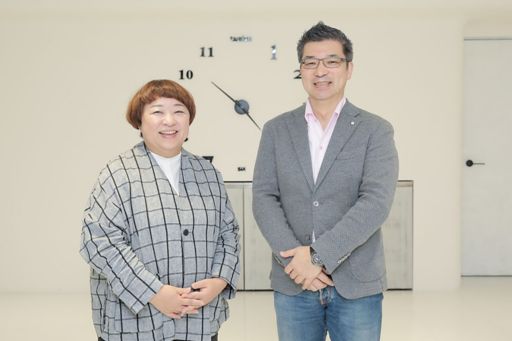An increasing number of companies have been taking on the challenge of implementing digital management and shifting to digital since the COVID-19 pandemic. However, new initiatives do not always proceed smoothly, and we hear that they are running into some kinds of "walls.”
In this article, we will introduce the discussion conducted between Mitsuo Tomita, President and CEO of ANA NEO Inc., a newly created company under Japan's aviation industry leader ANA Holdings, Inc., and Masayuki Chatani of KPMG Ignition Tokyo. They envision and fantasize about post-COVID-19 aviation demand and integration with new businesses while asking how ANA NEO was founded by steering into the digital domain, which is completely different from the business of its parent company, as well as its struggles, and what it is trying to accomplish through its new journey of metaverse travel.
What is ANA NEO Creating and Aiming for?


(Mitsuo Tomita, President & CEO, ANA NEO, Inc. (left), Masayuki Chatani, Representative Director & CEO of KPMG Ignition Tokyo and CDO of KPMG Japan (right)) *Professional affiliation and official position in the article are at the time of publication.
Chatani: I remember when you first came to our KPMG Ignition Tokyo office. I believe it was around 2019. This was before ANA NEO was established, and I was impressed when you told me that you “wanted to do business related to games.” However, I think that the idea was still in the process of being finalized at that time.
I understand that you carried out various reviews from there before establishing ANA NEO Inc., in August 2020. Please tell us about the background and what ANA NEO is aiming to do.
Tomita: ANA NEO was created as a joint venture between ANA and “JP GAMES,” a company founded by Hajime Tabata, who directed "Final Fantasy XV” before becoming independent.
As the term "metaverse" still did not exist at the time of its establishment, what we were thinking was that we wanted to deliver new experiences in the virtual space to everyone and to connect cultures and regions by utilizing the advantage of the virtual world where there is no distance or time constraints. Our ultimate vision and mission are to create a space (platform) where people can enjoy new lifestyles in the metaverse by fusing the real and virtual worlds.
As for the actual service, we are working hard to provide the world's first "travel-themed metaverse space," tentatively called "Sky Whale," from Japan by the end of this year.
The “Sky Whale" will include communities and also an element to enjoy the fusion of the virtual and the real. Since it is a journey in the metaverse, we hope to offer experiences that are new and can only be experienced there, or experiences that can be had in the real world but can be enjoyed in a different way.
The “Sky Whale" has three core services and "Sky Park" will initially be the main service at the time of release. We are envisioning a theme park that incorporates the game elements of travel and adventure with virtual imitation of the entire world. We also plan to develop "Sky Mall," which offers a virtual shopping experience by incorporating the concept of e-commerce and NFTs including cross-border EC (electronic commerce).
“Sky Park” will offer three types of travel experiences, “V Trip,” “Premium V Trip” and “RPG Tour,” all of which can be enjoyed by multiple people. "V Trip" offers content that enables players to take "short trips" to famous spots around the world that are spread out in a space where images captured by 360-degree cameras are processed.
With " Premium V Trip," we plan to offer new ways to enjoy travel, with abundant content that will allow visitors to enjoy most sightseeing areas for about two hours in a space created with 3D computer graphics and images taken by 360-degree cameras. In particular, we would like to offer the experience “to travel not only to the present, but also to the past and future,” which can only be provided virtually. As part of this, we are hoping to partner with the municipality of Kyoto to allow visitors, for example, to watch historical events and see Kyoto in the future, which is not possible in reality.
"RPG Tour" will include more game elements. For instance, we will prepare content where, if you buy an outfit for your avatar to wear, you can experience the story behind the outfit. The idea is that “when you buy a costume for Marie Antoinette, you can experience her lifestyle.”
In “Sky Park,” there is also an idea to have NPCs (Non Player Characters) in each field where you can talk to them and they will tell you about the local trends and culture.
We believe that we can also realize a fusion of the real and virtual worlds by providing a service in which users can make reservations for the tour plans proposed according to their individual preferences, utilizing information obtained from their experiences of this content and their purchases made through their avatars.
Furthermore, the third core service, "Sky Village," which will be released after "Sky Park" and "Sky Mall," will provide a little more than entertainment by including elements such as healthcare, education and government services, to create opportunities for people to experience a new lifestyle.
By providing these services through the metaverse, ANA NEO is hoping to grow its "regional development business in the digital-age " and "lifestyle business."
SHKY WHALE (provisional name)

Photo by: ANA NEO, Inc.
Sky Park (sample under development)

Source: ANA NEO, Inc. homepage
Sky Park (sample under development)
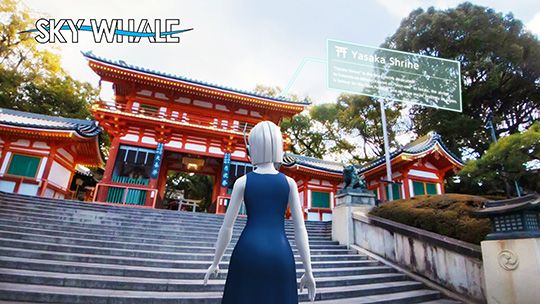
Source: ANA NEO, Inc. homepage
In regard to the "regional development business in the digital-age," in particular, the boosting of the regional economy and tourism have been promoted as depopulation and regional revitalization countermeasures in recent years. Therefore, by conveying to the world the greatness of many tourist destinations in Japan and abroad using our "travel-based metaverse," I imagine that we can not only lead them to make real visits but also realize "cultural preservation and inheritance.” It will also allow people to enjoy cultural assets that are difficult to see in the real world. Furthermore, the introduction of NFTs should contribute to deepening the understanding of the cultural values of the region and inheriting them in real society as well.
As a first step, we signed a cooperation agreement with the municipality of Kyoto, as mentioned earlier, and are now moving forward with specific reviews. We plan to continue to promote cooperation with more municipalities going forward.
Chatani: I see. Actually, I have some experience of virtual trips myself. Just when travel opportunities were lost due to the spread of COVID-19, services that are offered because of COVID-19 such as virtual trips to domestic and overseas destinations began to increase. The trips I experienced were tours to Yamagata Prefecture, Shimane Prefecture, Chile and Germany. The company that organized the "trips" sent me specialties of the destinations in advance, for instance, from a sake brewery and a dried fish shop in Shimane, which I enjoyed while the person who actually made them gave us a guided tour and explanation.
Even though not everyone seemed to be professional tour conductors, having local people show us local places provided us with enjoyment and surprises that normal sightseeing tours do not offer and can only be conveyed by someone who knows the local area. I thought, “This is really fun.“
I honestly find it interesting to think that ANA NEO’s project will go a step beyond such virtual trips and I am very much looking forward to seeing what kind of metaverse space will actually be created.
What Triggered ANA to "Create a Metaverse”
Chatani: When people hear that "ANA is going to develop the metaverse as a business," they probably think that the new business is going to be a revival measure to support its core business, because aviation needs hit the bottom due to COVID-19. However, the project was actually launched in the middle of 2019, and I’m very interested in knowing how the new company was established.
Tomita: That’s exactly what everyone around me seems to think. They think that we are working on this project to support the airline business, which is in dire straits due to the disruption of human flow and logistics caused by the COVID-19 pandemic. However, we started this project in the fall of 2019, and the pandemic suddenly became serious as we were discussing it. Then, a lot of travel content by YouTubers began to appear in the world and everyone became familiar with the term "metaverse." The upheaval of the past few months was completely unexpected by us, but I think that our approach turned out to be very much in line with the current trends of the world.


While COVID-19 has certainly had a significant impact on the aviation industry, the industry has also experienced unexpected events in the past such as 9/11, SARS, the bankruptcy of Lehman Brothers and the Great East Japan Earthquake, each of which caused the airline industry to experience a massive drop in demand that affected its operations. I was also involved in marketing at ANA for more than 20 years and experienced many "situations that were beyond our control.” The ANA Group naturally has many related businesses, but all of them have a very strong relationship with aviation and have been dragged down by the ups and downs of the aviation business.
In such an environment, we were searching for a business that had synergy with the business of the parent company but was tolerant of large-scale events. This is when I had a chance to meet Tabata-san at JP GAMES.
I was not a game player, but as I talked with Tabata-san, I came to realize that the game industry and the airline industry share a common ground, which was that airline marketing involves route planning and fare design based on customer behavior analysis, and the world of RPG games is also built on the prediction of user behavior. Another commonality that emerged was that customer behavior, which used to be analyzed and predicted massively, has recently been shifting toward one-to-one marketing, based on each individual customer, using big data.
In terms of synergy with ANA’s business, we confirmed JP GAMES’s high level of CGI and were confident that, if we could realize a high-quality virtual world, the affinity with real travel would definitely increase. This was probably the starting point for creating the "Sky Whale."
Chatani: Virtual space is indeed useful in many ways. For example, when we hold an event inviting students from Japan and the U.S., we conduct an office tour on VR data for students who cannot come to this office in person. By doing so, not only the problem of "not being able to come in person" but also the restriction of "this is a business space and can't be entered now" will be eliminated, which has the advantage of being able to provide more detailed explanations.
Tomita: I see. It will then be possible to operate KPMG Ignition Tokyo’s office in the "Sky Village." I can imagine such a world expanding going forward.
Why It was Possible to Enter the Digital Domain from a Different Industry
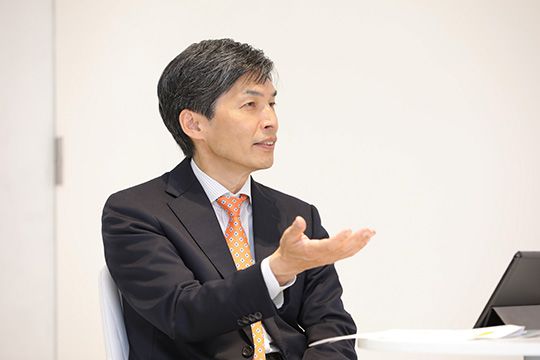

Chatani: The “Sky Whale” project is very interesting, and as I am also having my avatar do the presentations at internal meetings, I can see it becoming common practice. However, I have some doubts about whether it would be easy for a large company to turn this into a business. When stepping into the digital sector, what kind of discussions and conflicts took place within the company?
Tomita: It was certainly not a situation where the project was easily approved. It is only recently that the conversations we are having have become commonplace and that the idea, "why don't we just do it in the metaverse world," is not so far-fetched. The idea of evolving remote work to be done in the metaverse space is also becoming more and more realistic.
However, when we first talked about the prototype of the "Sky Whale" project, such things were not talked about in the world. Especially because ANA has been doing business in the real world, when we talked about how we were going to create this kind of game-like world, it did not get through to them at all (laughs).
“How to persuade people within the company” was a very high hurdle to overcome at the beginning.
I think that many young people will probably find it interesting and extremely exciting to know how a metaverse space like the "Sky Whale" will be utilized. I also believe that the idea that "eventually, the world will probably be like this" from a sensory point of view will lead to talk about how interesting this kind of thing might be.
However, at the end of the day, it is not young people but those in management who have the authority to make decisions, and there are differences between them in the way they see things. When we talked to them, we often received reactions of surprise and skepticism such as, "Are we going to do entertainment as a business?”
Under such circumstances, I approached Shinya Katanozaka, the current chairman and then president of ANA Holdings, and received a very positive response. He said, “I feel excited just thinking about my avatar living in this virtual world when it is created! I want to buy all kinds of things there!"
He also stated, "The airline's most important asset is not the airline business. It is the customer that is the most important and what we are doing is customer business." He also added, "Our business is not limited to the airline business because our role is to provide something in a way that satisfies our customers. We want to offer ANA fans a dream that goes beyond the aviation business." Hearing this, I thought to myself, "Ah, we share the same feelings.”
The project then became known throughout the company in a top-down manner when he was president, and so we were able to start moving forward as a company.
In the case of DX and digital management, I think it’s still difficult for Japanese companies to make progress only with the bottom-up approach. It may be difficult for Japanese companies to take on new initiatives unless there is a parallel top-down approach from the management that understands young people's ideas and sensibilities, sympathizes with them and shares their passion for what they see as the future.
Needless to say, the reality that it will still take time for the core aviation business to recover due to the prolonged COVID-19 pandemic has probably served as a major factor to subsequently support the project and boost the level of expectations. However, in the case of ANA, I think we were very lucky that Katanozaka was very much interested in the project.
Challenges of the Metaverse Space and "Barriers" of Being ANA
Chatani: With the "metaverse" becoming more common, as you mentioned earlier, a number of films are being made on the subject. Meanwhile, one of the themes that is often discussed is the trouble between the real world and the virtual world and the difficulty of “immersion” in human feelings. What are your thoughts on designing around these issues?
Tomita: The metaverse we are trying to create will initially focus on “travel” so that it will be easier for users to understand and provide them with a sense of security. As we envision that people who like to travel will get together to enjoy themselves individually or as a group, there shouldn’t be too many problems if they just go on a trip and come back.
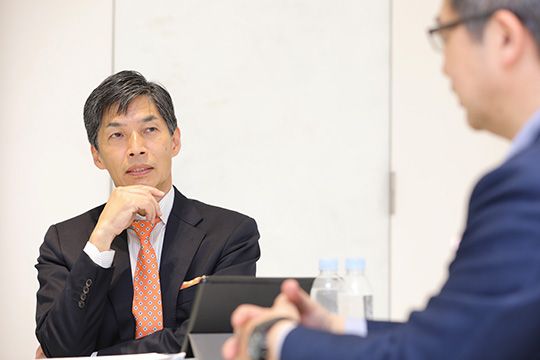

However, I can imagine that if the stage is extended a bit further from traveling to, for example, experiencing a new lifestyle, some kinds of issues will surely arise in the future. This is because, if we live in a metaverse space or develop services related to healthcare, education or government, the same problems that are occurring in today’s human society will occur with more probability.
Based on our recognition of these issues, we are in the process of trying to move forward with a number of parallel projects, including acquiring know-how from different industries and forming actual business partnerships. I cannot be more specific yet, but we think that this is important.
Chatani: I guess it depends on how it is used. For example, a university professor who saw my avatar said, "I really want to use it for my lecture! I'm sure the administration will stop me but I really want to go through with it.”
If AI is entrusted with part of a 90-minute lecture, in which the talk is given one-sidedly, and the Q&A session is conducted by the professor himself, he should be able to use a considerable amount of time freely and it may also become possible to provide classes in parallel.
I imagine that by going to this kind of metaverse or virtual space, we can create another world of our own in parallel to the one we live in, which will enable us to live an incredibly efficient and fruitful life. I think it would be interesting if we could make good use of such parallel worlds.
Tomita: In this sense, one issue that we are already aware of is the issue of personal information. If the metaverse is considered as a place for communication through avatars, I think it would really be nice if as many people as possible could gather together and communicate with each other including strangers, which is technically possible, of course.
But for our part, we intend to put a few restrictions there. We can create a place for matching by allowing someone other than familiar members into a group, but I think that various issues will probably erupt all at once. Such matters need to be pursued carefully. As I think that it’s preferable for a parallel world to have no intentional restriction, I feel that efforts should be made to realize an essentially parallel world by resolving these issues.
Chatani: You’re right. I have experienced this before but it is indeed very difficult to operate and maintain a distance from the community. It can be interesting, but it also carries the risk of flaming if things go wrong. On the other hand, however, if people leave, it will not be able to exist and the meaning of providing it will be lost. How to position it and play one’s card in such a situation will probably be one of the difficult challenges for a major company like ANA.
Tomita: I’m sure that those who see the name ANA and come in find "some sense of security" there. While this may be one of the barriers, DX practiced by major companies should still be viewed by the market with the expectation of providing security and trust and so we cannot afford to damage that.
In this sense, our stance in creating space is the same. I have been discussing with Tahata-san that we want to incorporate BtoB initiatives and UGC (User Generated Content) in order to achieve a sustainable model rather than a business model in which content is continuously developed and consumed. However, there is the issue of "Can we use everything provided by users and how can we do that?" The question of how to make it consistent with the guidelines will be an issue we will have to face as a business carried out by ANA Group.
Profile of Interviewee
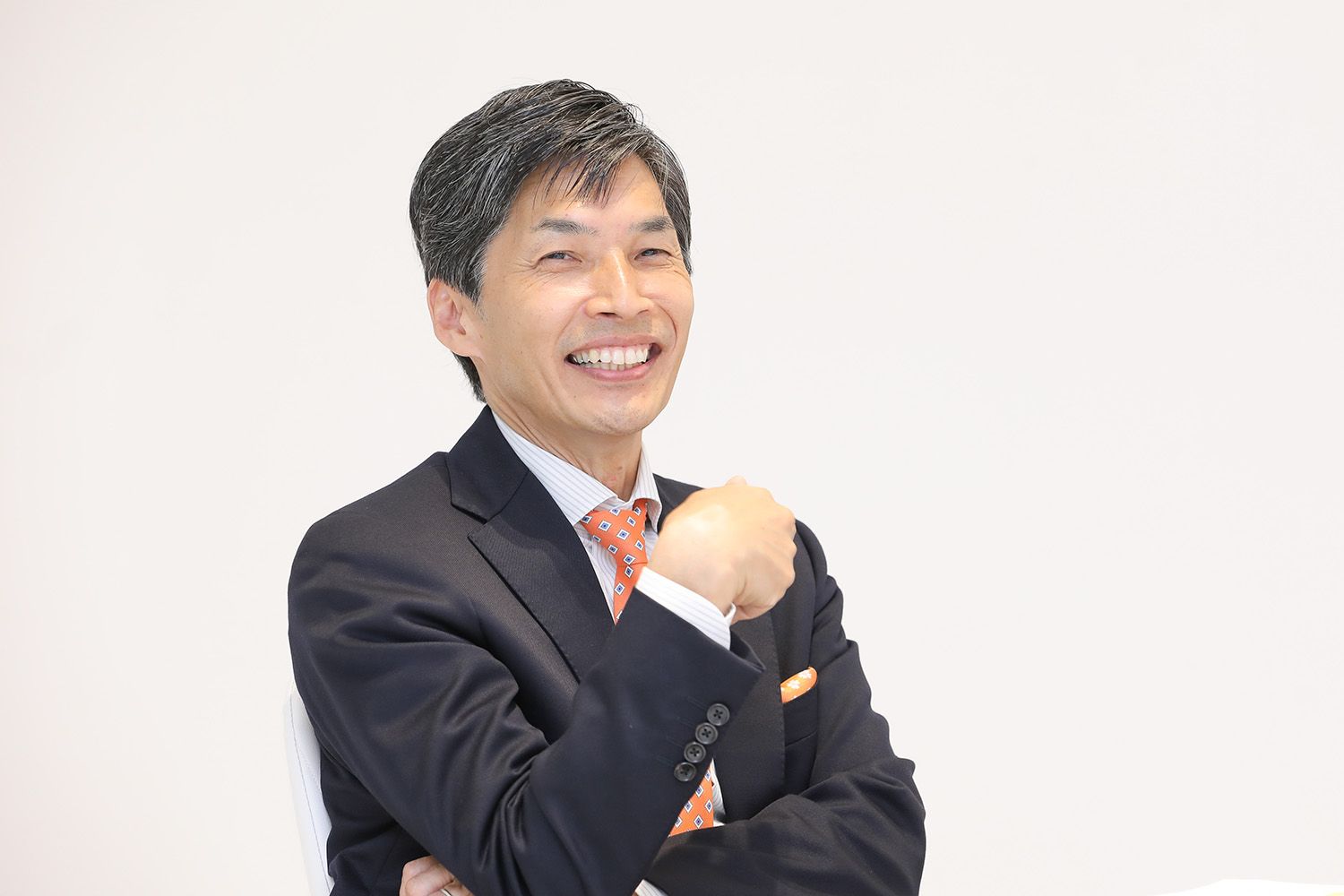

Mitsuo Tomita
President & CEO, ANA NEO, Inc.
Mitsuo Tomita joined ANA (All Nippon Airways Co., Ltd.) in 1987 and led the airline network strategy and alliance strategy at ANA’s Marketing Department. He was also stationed in the U.S. and Singapore, where he was exposed to international marketing and strongly felt the need to expand ANA’s travel and transportation-based customer business, which it has cultivated in the airline business, to the next stage without keeping it only in the real world. In August 2020, he therefore established ANA Neo, Inc. to take on the challenge of a new airline business in the 5G era.
Follow us on KPMG Ignition Tokyo LinkedIn for the latest news.
Connect with us
- Find office locations kpmg.findOfficeLocations
- kpmg.emailUs
- Social media @ KPMG kpmg.socialMedia


